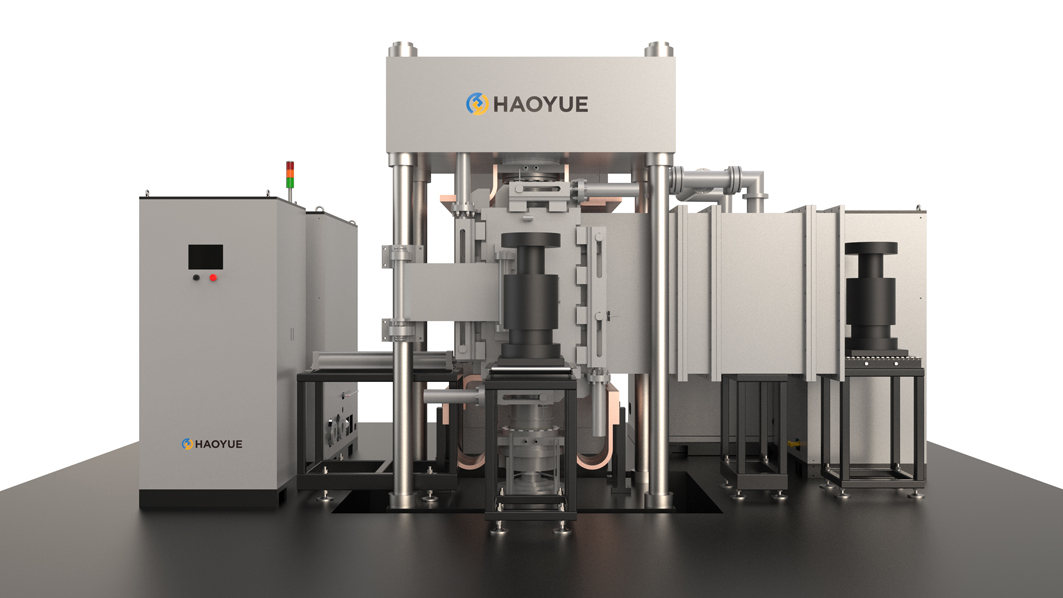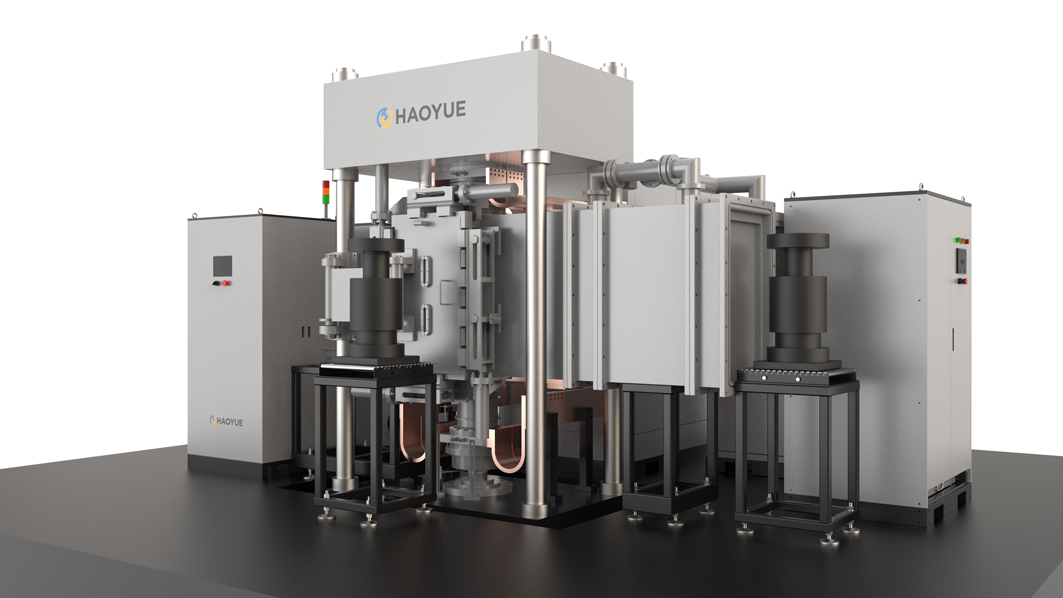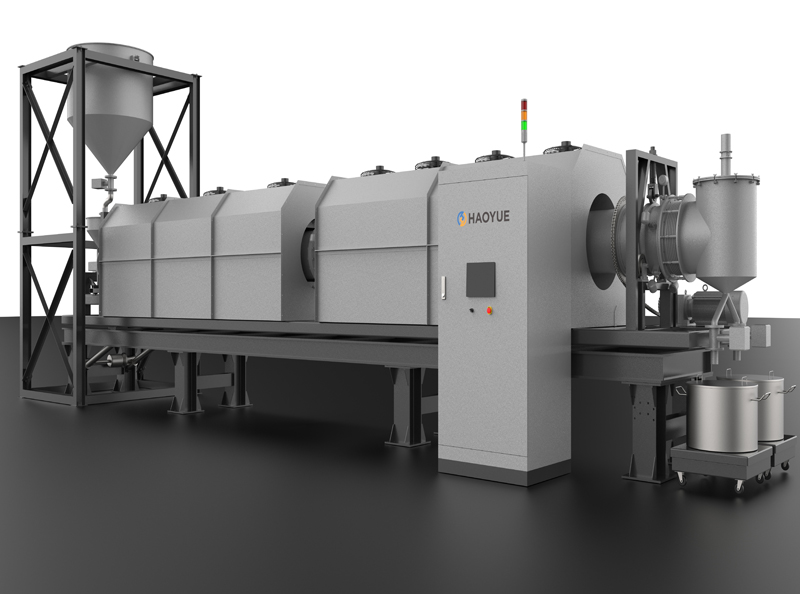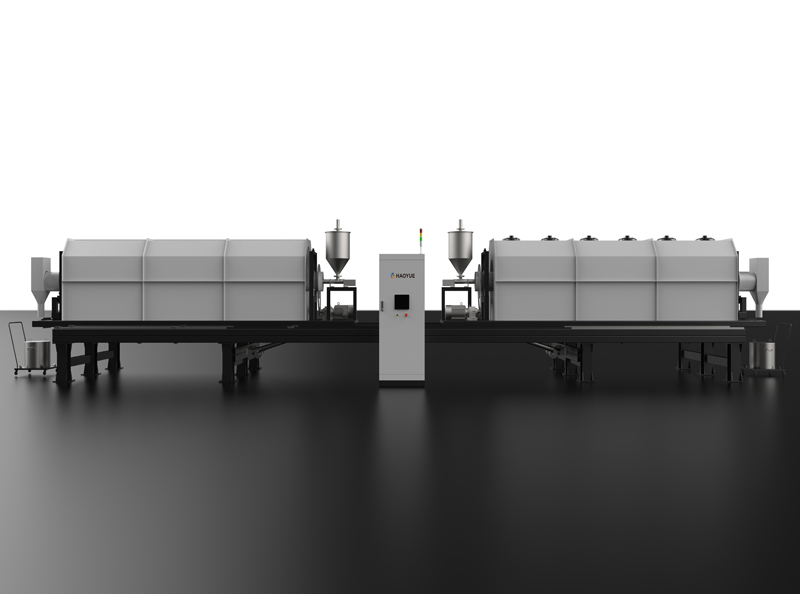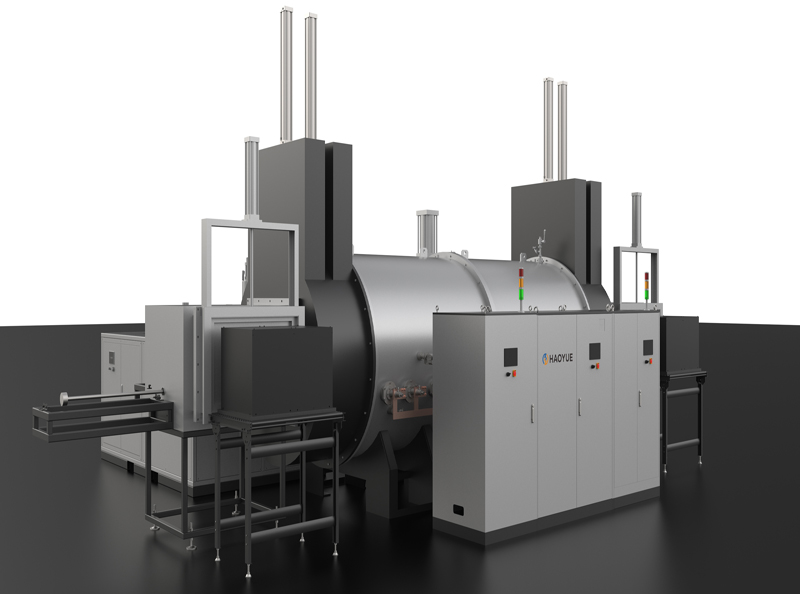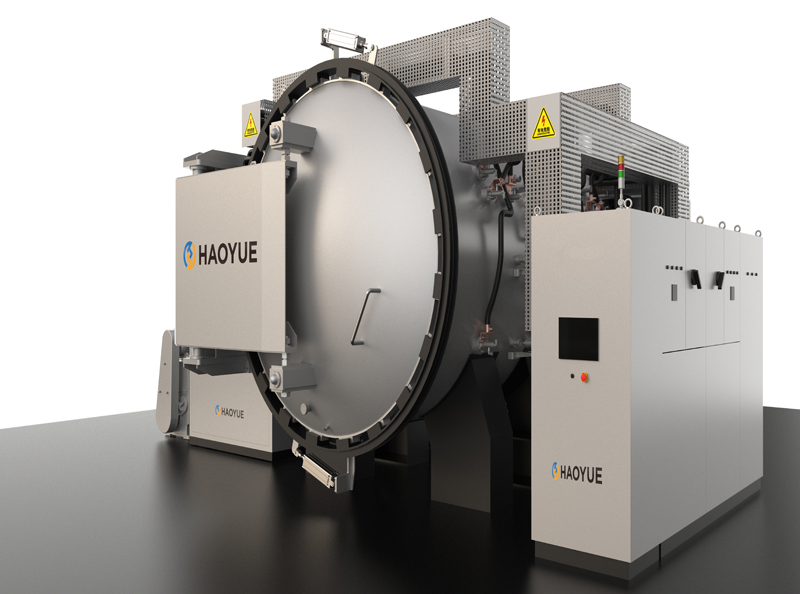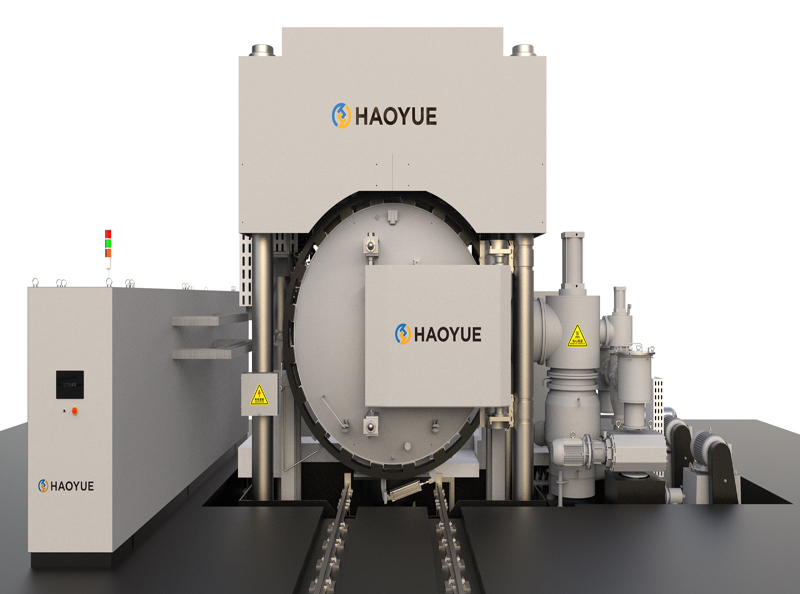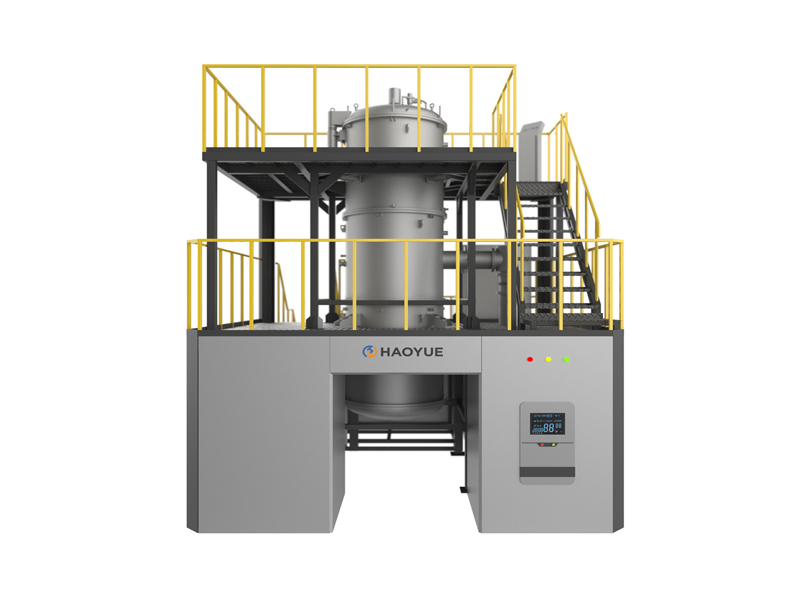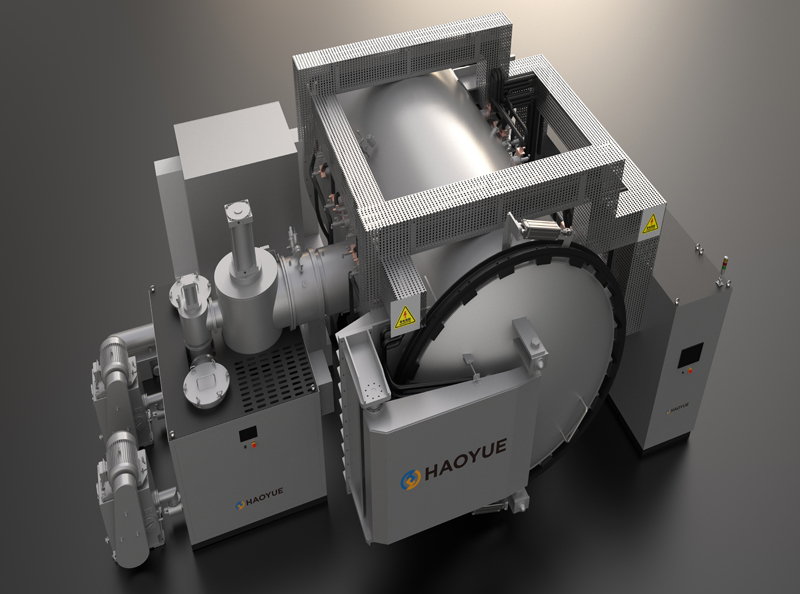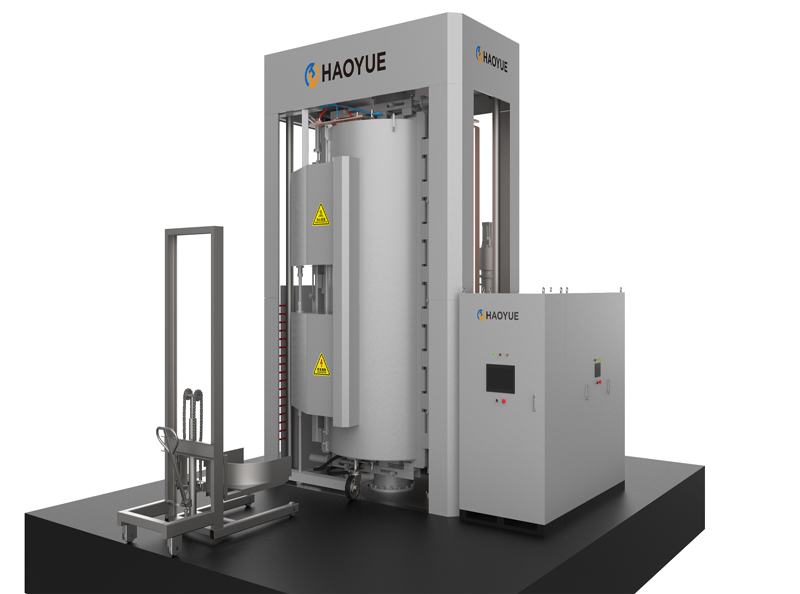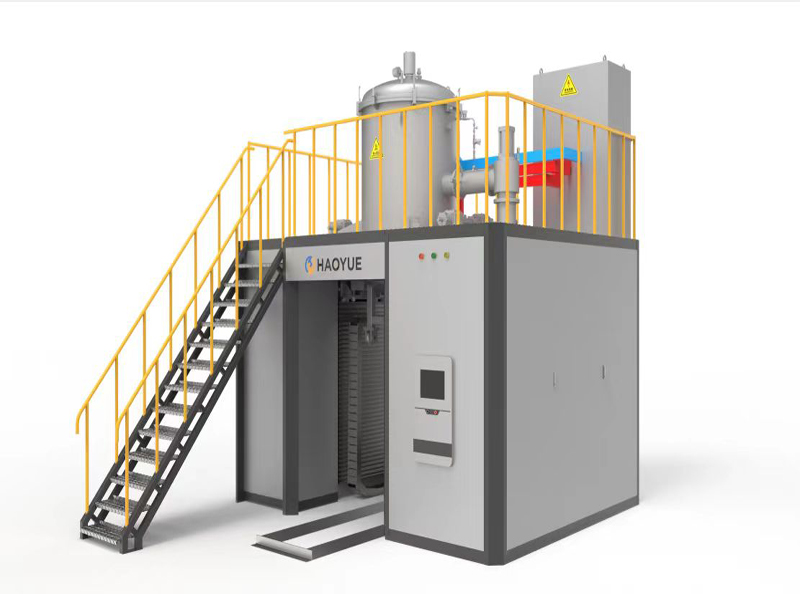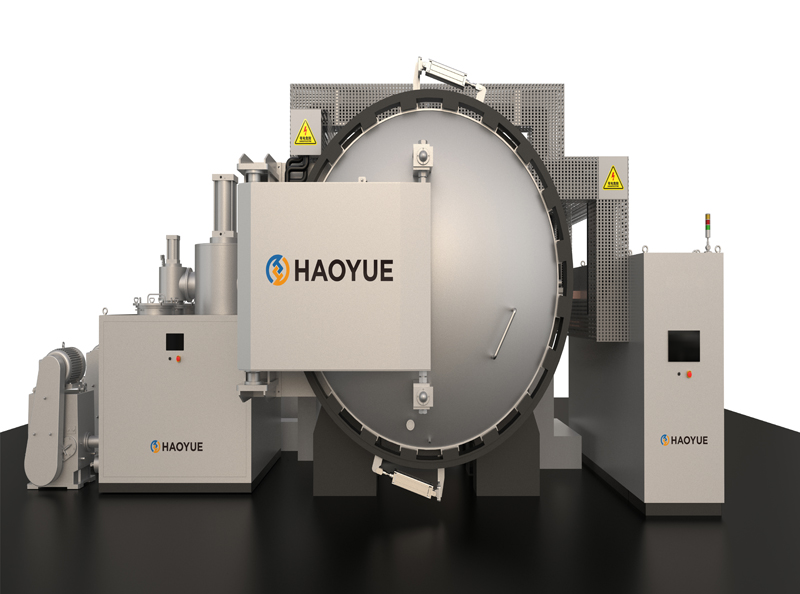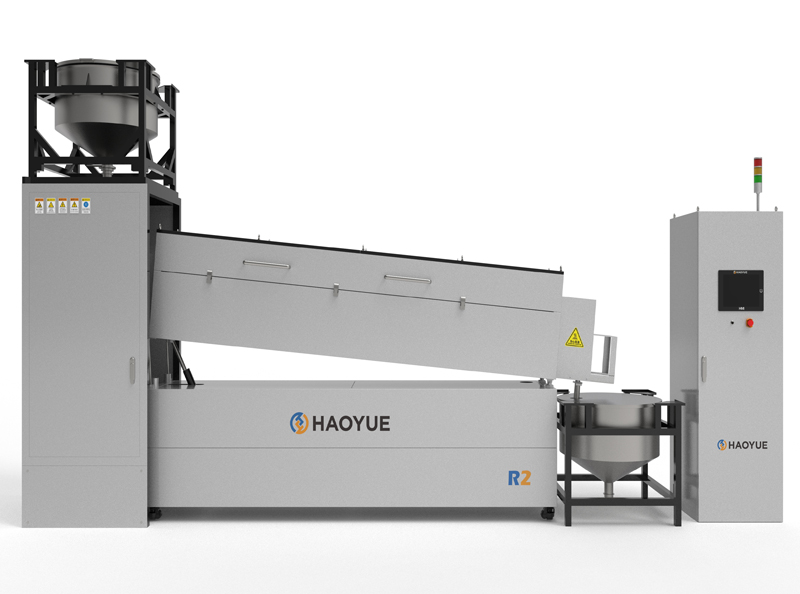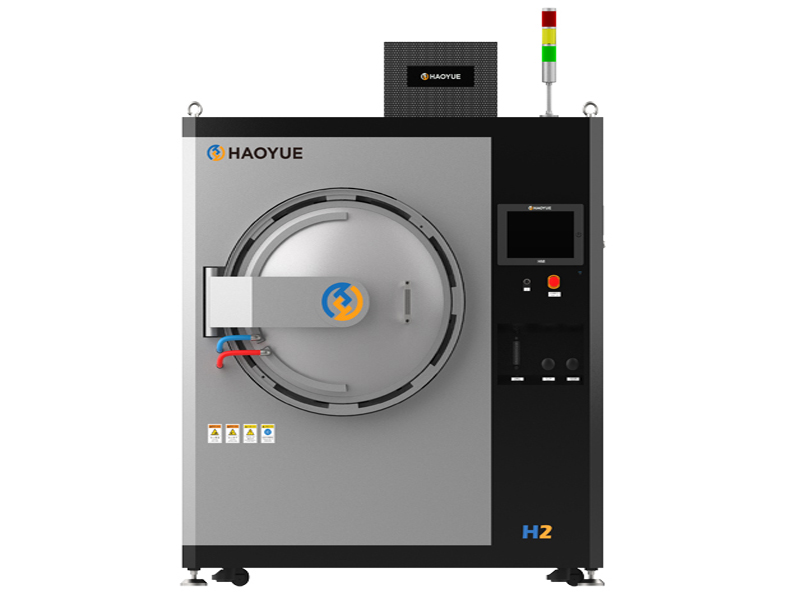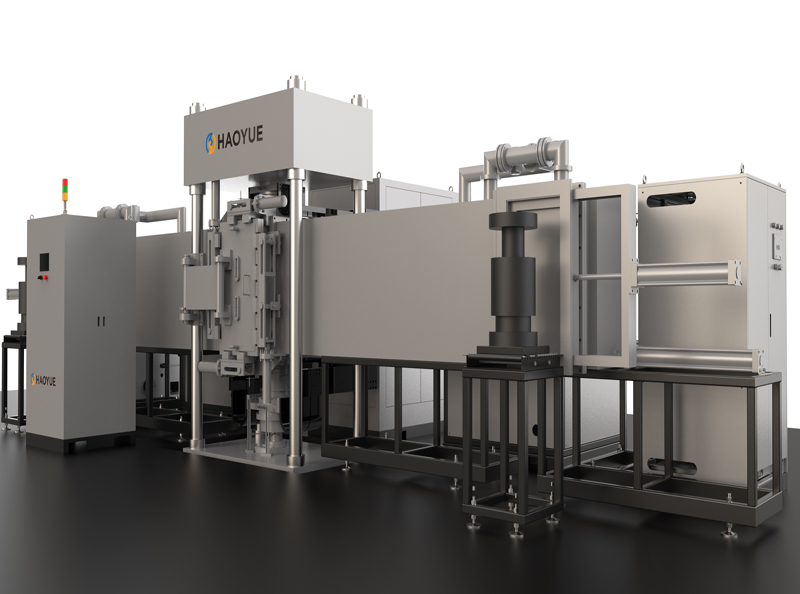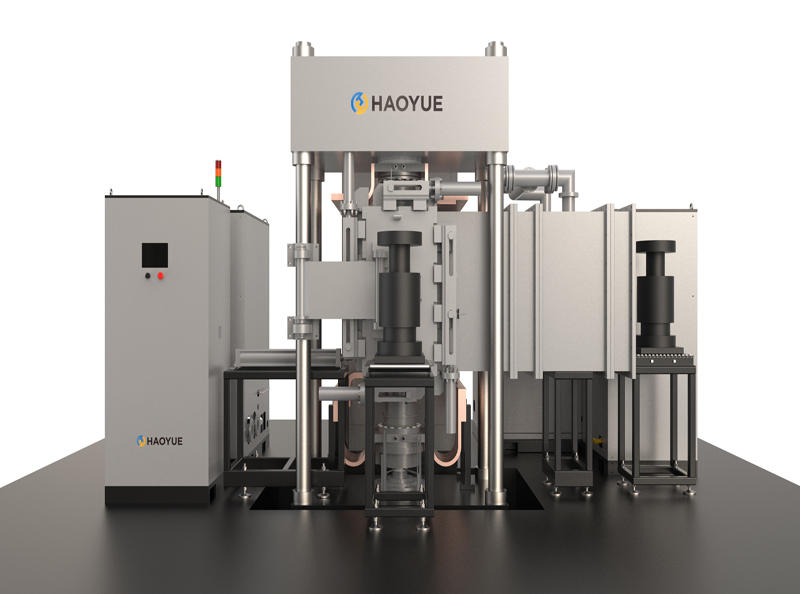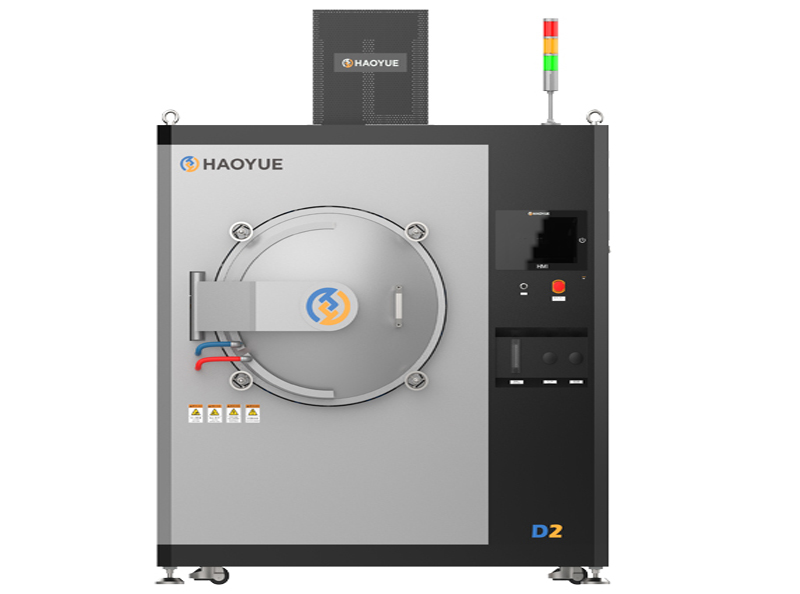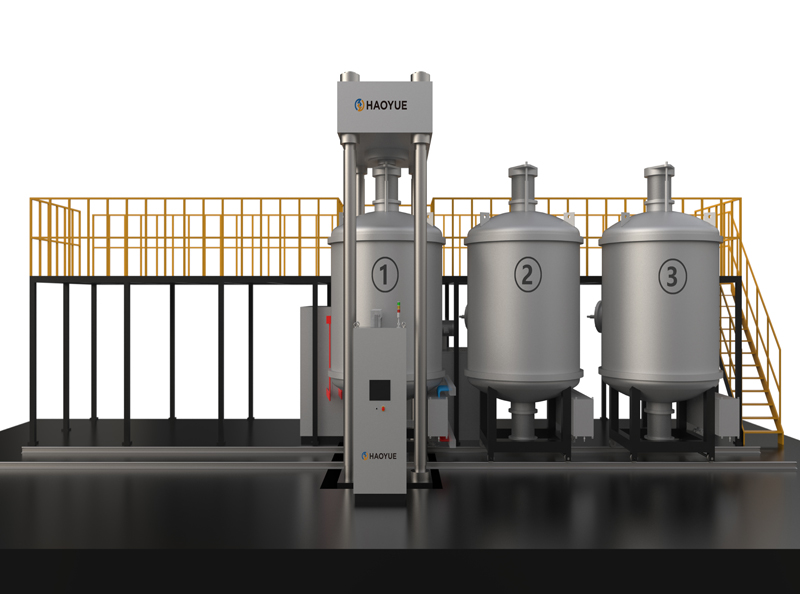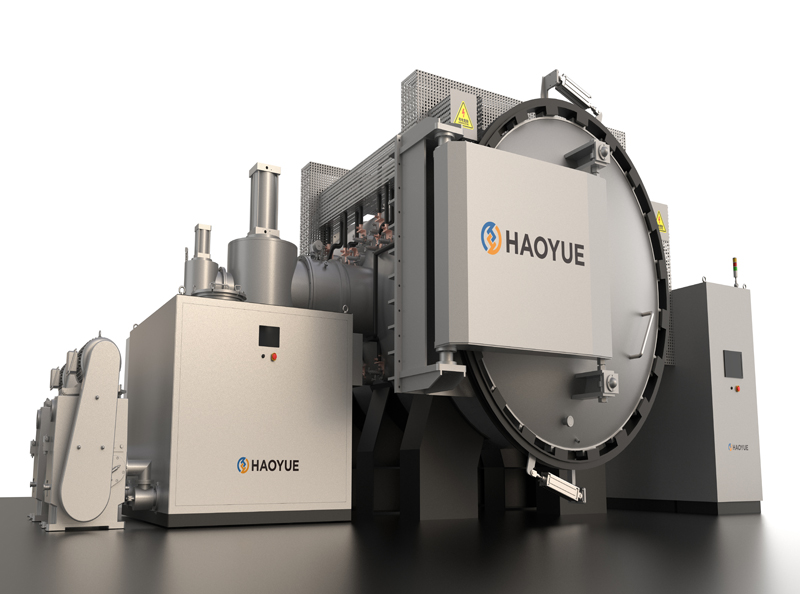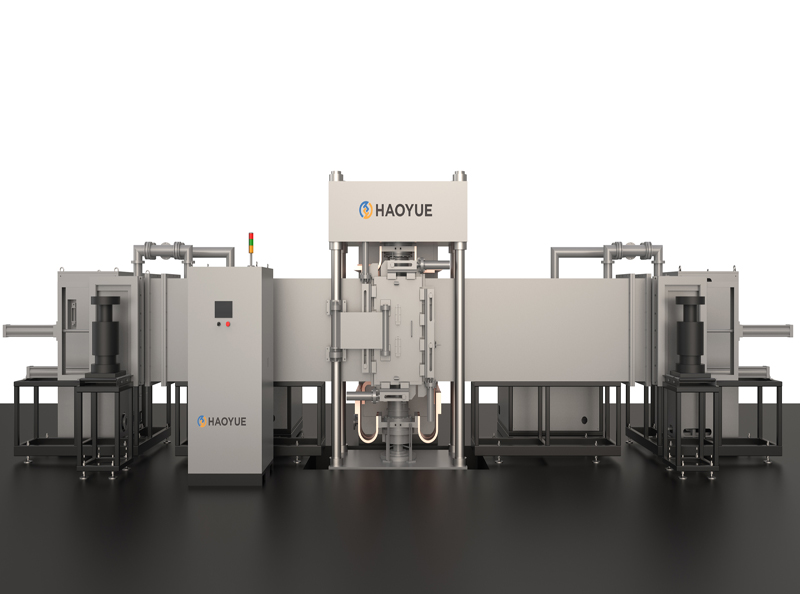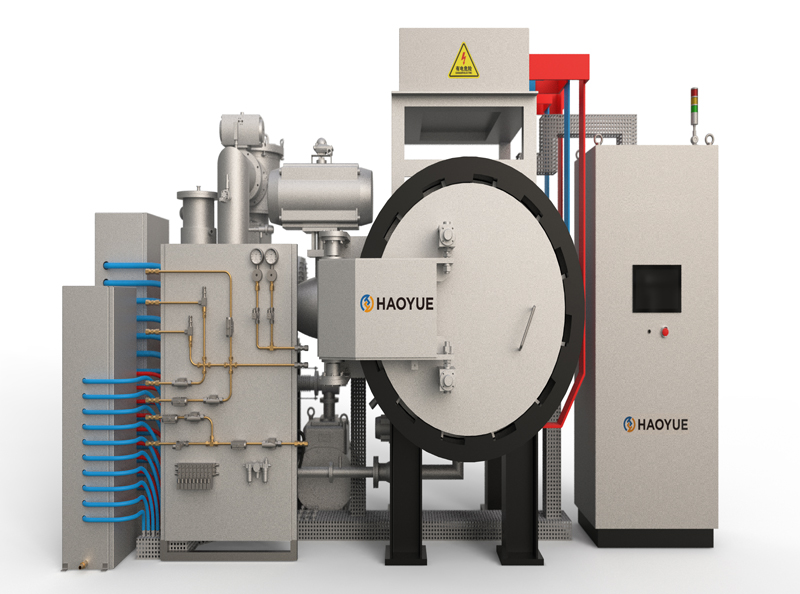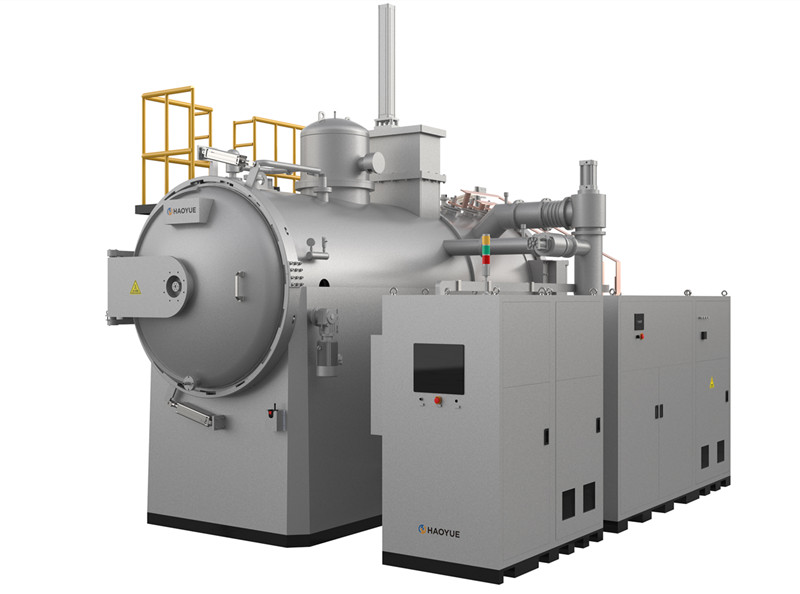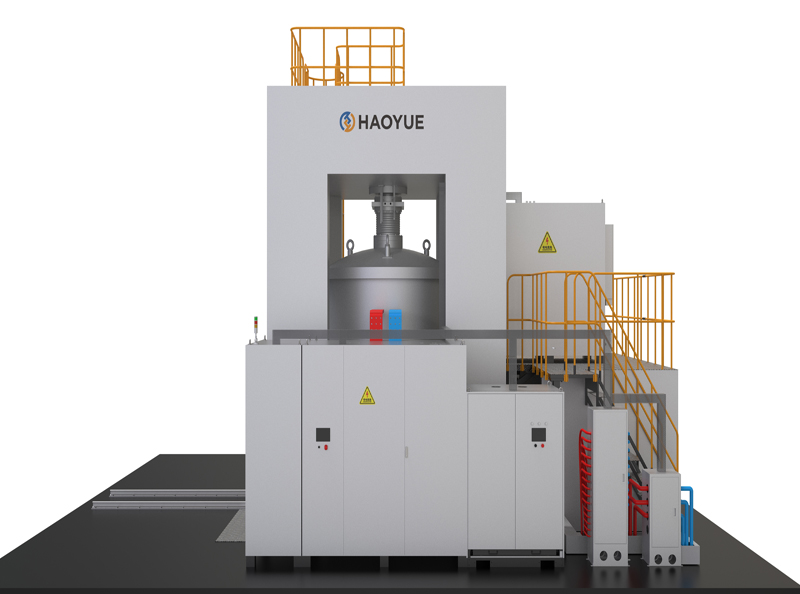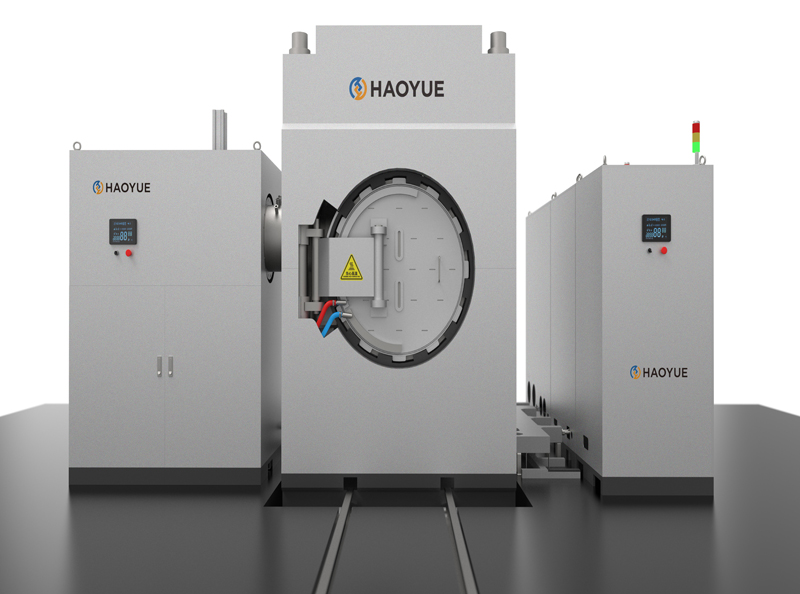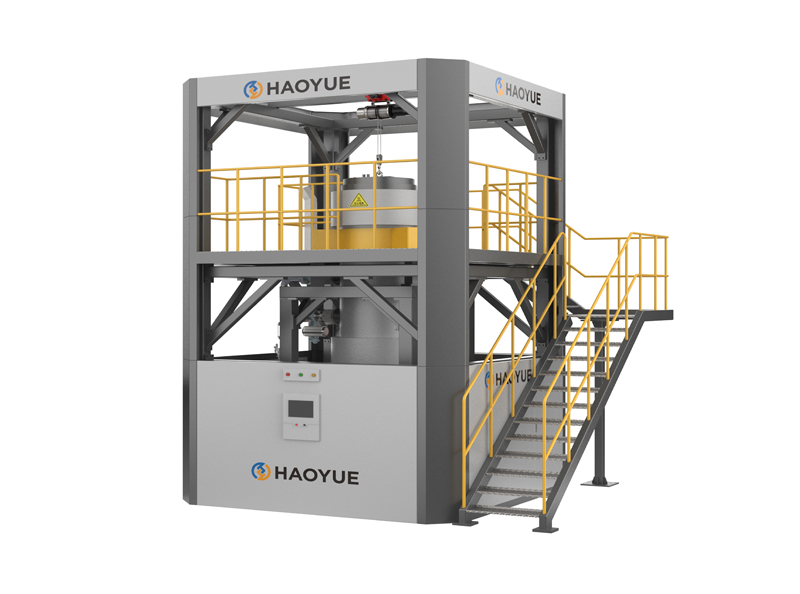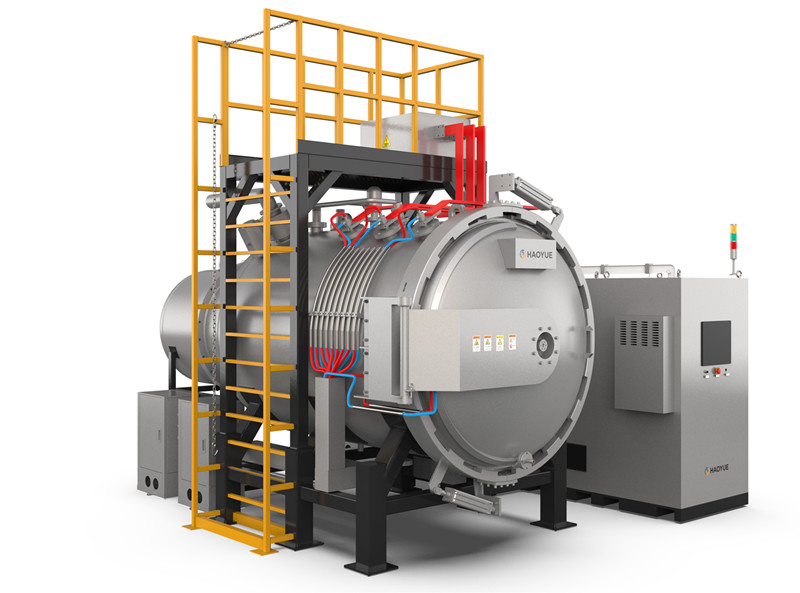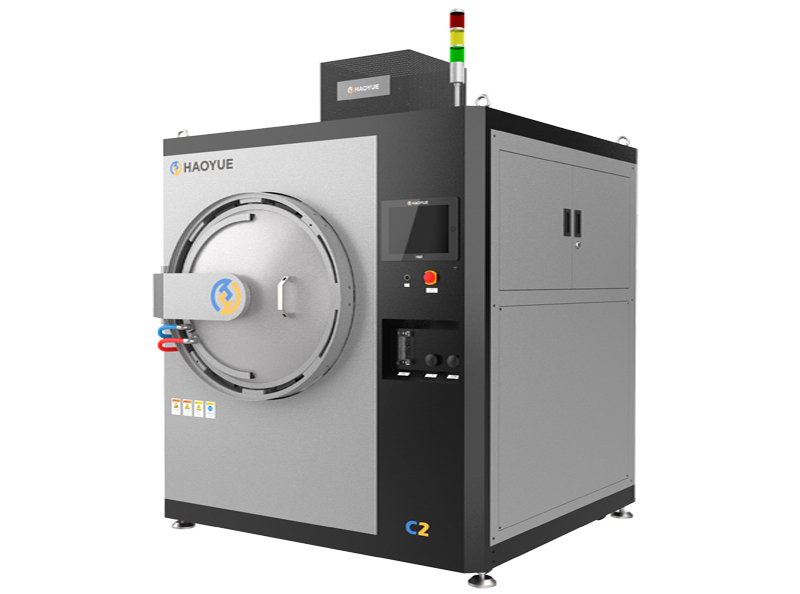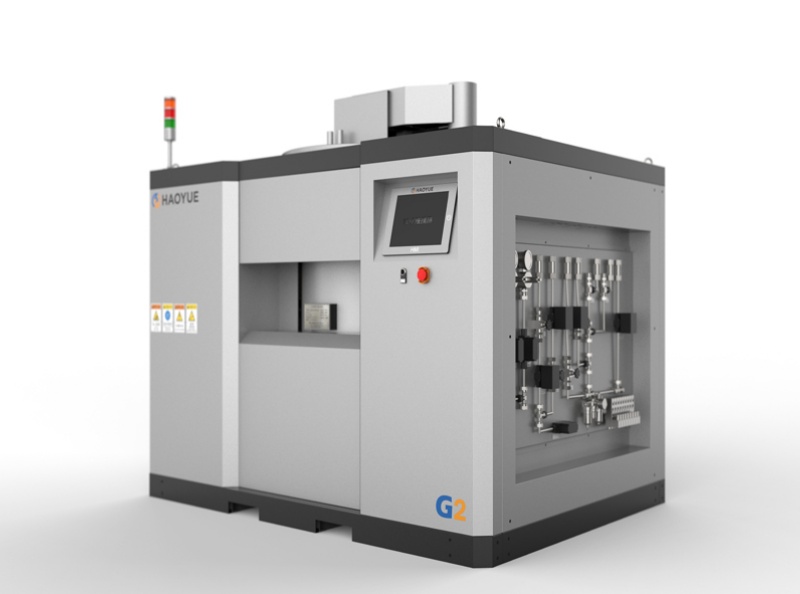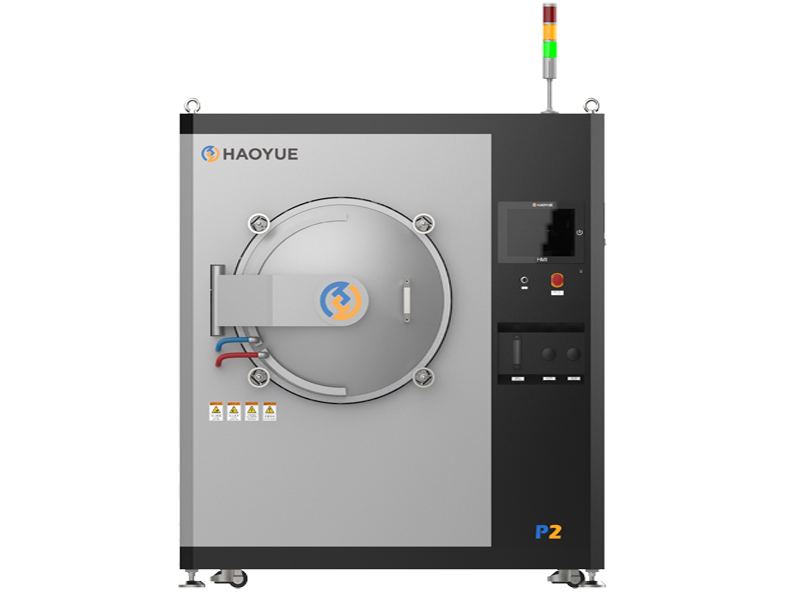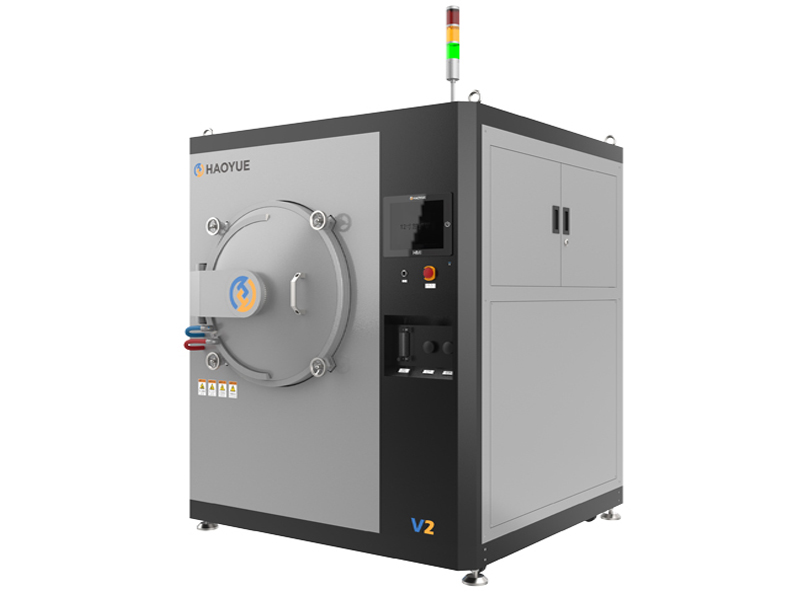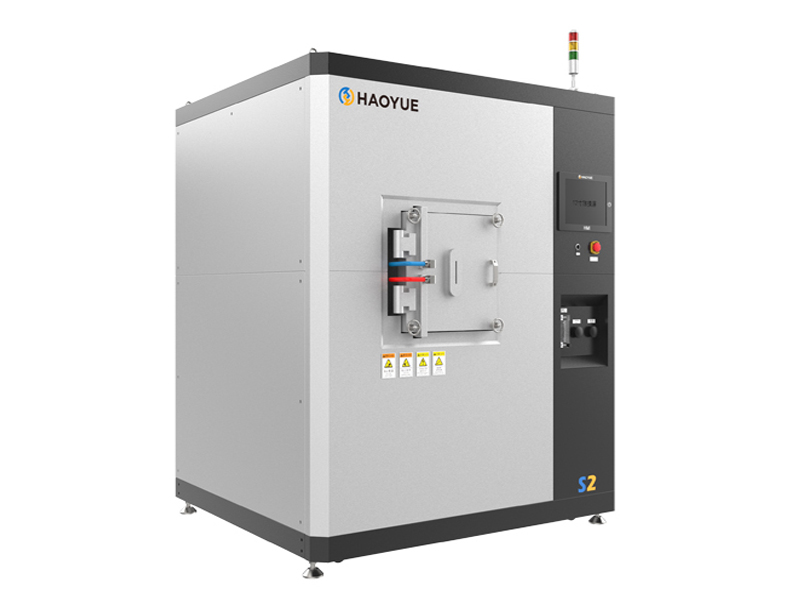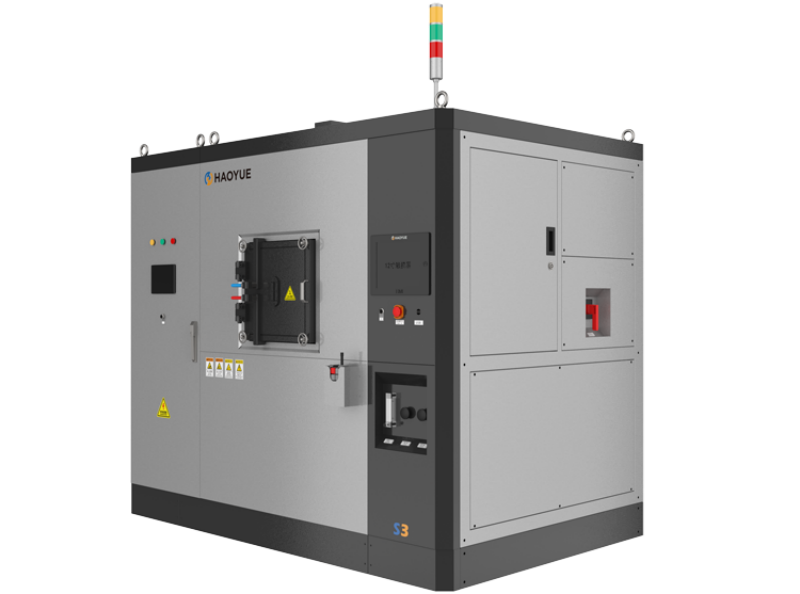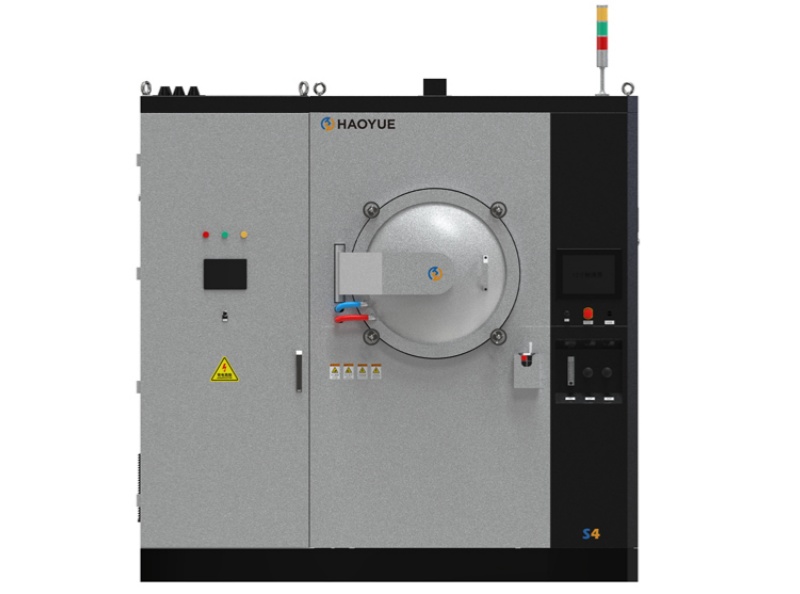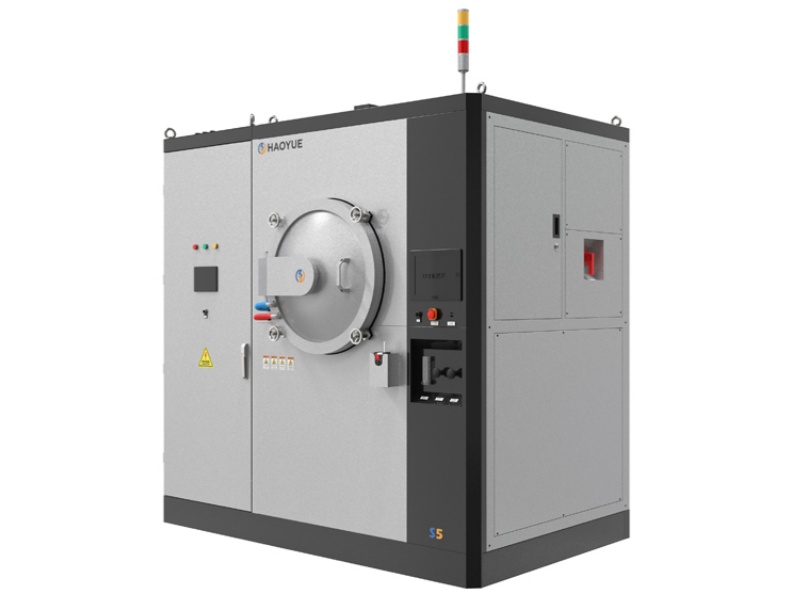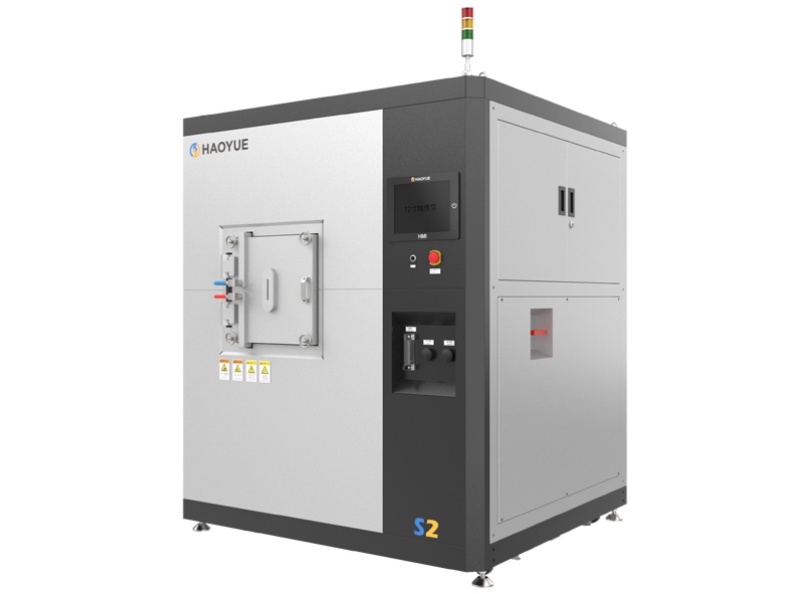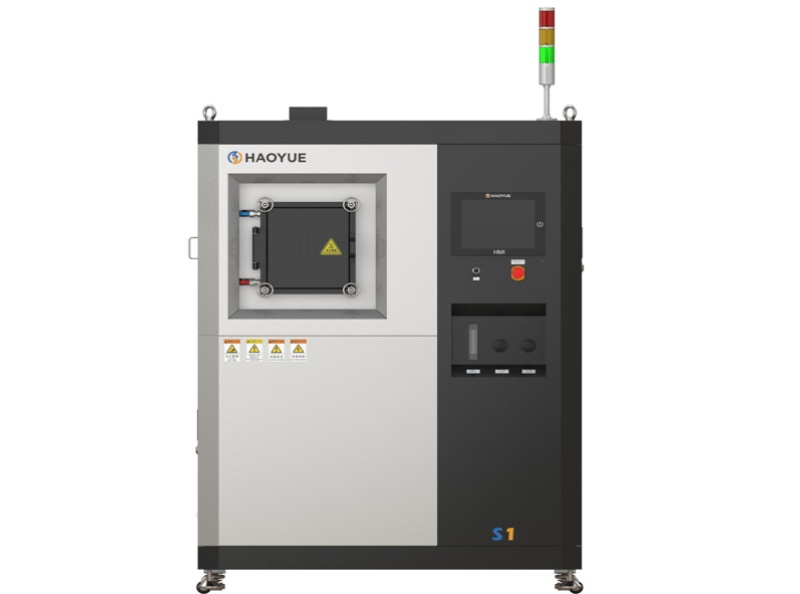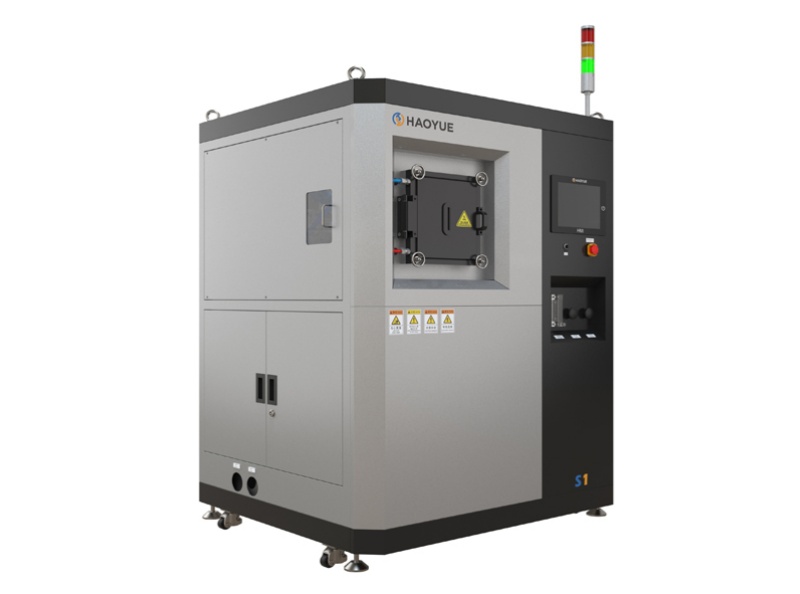Semi-continuous Type Spark Plasma Sintering
Fast Heating Rate / Short Sintering Time / Controllable Organizational Structure /Energy-saving and Environmental Protection
The SPS (Spark Plasma Sintering) discharge plasma sintering system is one of the most advanced sintering systems in the world today. It is a new rapid sintering technology that applies pulse current and axial pressure between two electrodes for powder sintering densification. Simultaneously using induction heating as auxiliary heating has distinct characteristics such as good temperature uniformity, fast heating speed, short sintering time, controllable microstructure, energy conservation and environmental protection. It can be used to prepare metal materials, ceramic materials, composite materials, as well as nano bulk materials, amorphous bulk materials, gradient materials, etc. Semi continuous production can increase production efficiency.
Technical Data
Due to the discharge effect caused by the application of DC pulse current during the SPS process, there are several unique characteristics:
It can quickly heat up and cool down, significantly shorten production time, and reduce production costs (with a heating rate of up to 200°C/min);
Low sintering temperature (compared to hot pressing sintering, the sintering temperature can be further reduced);
It has a unique purification and activation effect (Eliminating the adsorption of gas on the surface of powder particles and breaking through the oxide film), easily achieving the sintering of difficult to sinter materials and multi-element materials;
Compared to traditional sintering processes, materials with more uniform, denser, and smaller grain sizes can be obtained in a shorter time;
Compared to traditional sintering processes, it can significantly save electricity; Adopting our professional DC pulse power supply technology, it has fast sintering speed, stable and reliable performance, and good energy-saving effect; High pressure accuracy: Adopting a servo pressure control system, the pressure accuracy is ±3‰;
Using dual temperature sensors for temperature measurement, K-type thermocouples for temperature control in the low temperature range, and infrared temperature control in the high temperature range;
Good safety performance: Adopting HMI+PLC+PID pressure sensing control, safe and reliable;
Good sealing performance: Dynamic pressure heads are sealed with corrugated pipes to ensure no air leakage.
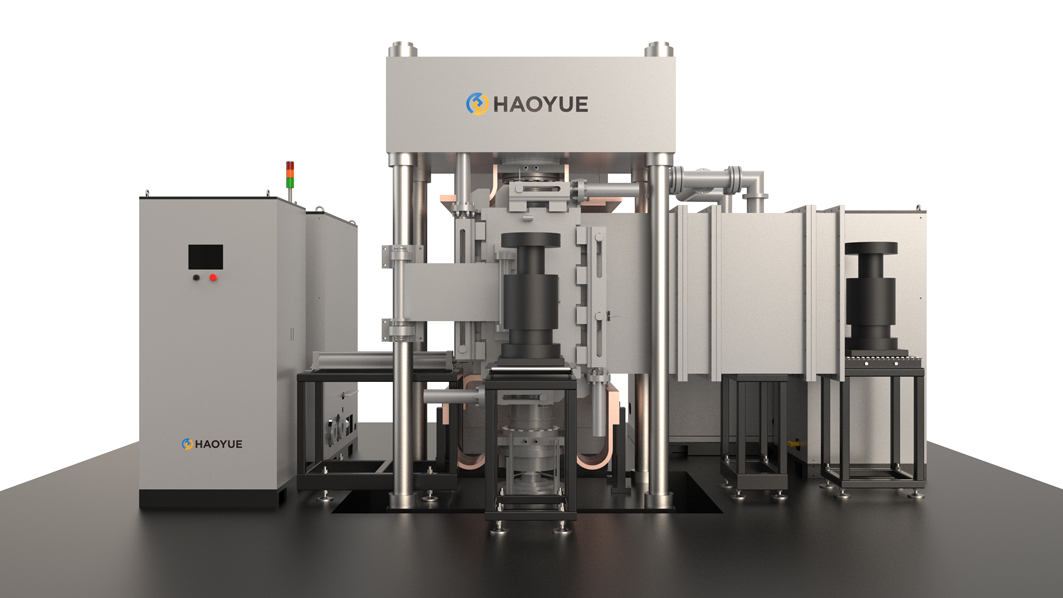
Specifications
| NO | Model | Device Form | Sample Diameter (mm) | Pressure(t) | Ultimate Vacuum(Pa) | Max. heating power [kW] | Current (A) | Voltage (V) | Operating Temperature(℃) |
| S-150S | VHPsp-25/70-2200 | Semi-continuous (Two Chambers) | Φ150 | 100 | 10 | 300 | 30000 | 10 | 2200 |
| S-200S | VHPsp-32/80-2200 | Semi-continuous (Two Chambers) | Φ200 | 200 | 10 | 400 | 40000 | 10 | 2200 |
Application
Metals:Fe, Cu, Al, Au, Ag, Ni, Cr, Mo, Sn, Ti, W, Be;
Ceramic oxides:AI2O3, Mulitex ZrO2, Mg, SiO2, TiO2, HfO2;
Carbides :SiC, B4C, TaC, WC, ZrC, VC;
Nitrides:Si3N4, TaN, TiN, AIN, ZrN, VN;
Borides:TiB2, HfB2, LaB6, ZrB2, VB2;
Fluorides : LiF, CaF2, MgF2;
Metal Ceramisc :Si3N4+Ni ,Al2O3+Ni, ZrO2+Ni, Al2O3+Ti, SUS+WC/Co, BN+Fe, WC+Co+Fe;
Metal compounds :TiAl, MoSi2, Si3Zr5, NiAl, NbCo, NbAl, Sm2Co17.
Sintered nanomaterial without significant grain growth
FGM («Functionally Graded Materials»)
Composite materials
Innovative carbide metals
Aluminum and copper alloys as well as intermetallic compounds
Structural and functional ceramics


